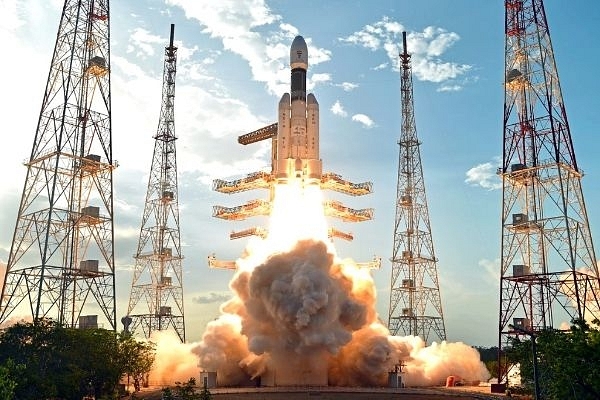Insta
ISRO Fails To Put Advanced Geo-Imaging Satellite Gisat-1 In Orbit As Cryo Stage Fails To Ignite

ISRO’s GSLV Mark-III D1 launched with GSAT-19 satellite (Representative Image)
In a setback, the Indian Space Research Organisation (ISRO) on Thursday failed in its mission of putting into orbit its most advanced Geo-Imaging Satellite-1 (GISAT-1), reports Times of India.
The 57.10 metre tall, 416 tonne Geosynchronous Satellite Launch Vehicle (GSLV-F10) lifted off from the second launch pad at 5.43 am as scheduled and the the core stage burn out happened as planned, propelling the rocket in its intended path.
Everything went off well as planned till the cryogenic engine got fired at about five minutes into the rocket's flight.
At about six minutes into the rocket's flight and soon after the cryogenic engine started operation, the mission control centre at the space port here tensed up as there was no data coming from the rocket.
One of the ISRO officials announced that there was a performance anomaly in the cryogenic engine.
Announcing the mission failure, K. Sivan, Chairman, ISRO said: "The mission cannot be fully accomplished because of a technical anomaly observed in the cryogenic stage."
Along with the rocket, the 2,268 kg GISAT-1/EOS-03 communication satellite carried by the rocket was also lost.
The GSLV-F10 is a three stage/engine rocket. The core of the first stage is fired with solid fuel and the four strap-on motors by liquid fuel. The second is the liquid fuel and the third is the cryogenic engine.
For ISRO, this is the second space mission in 2021 after the successful launch of Brazilian satellite Amazonia-1 by its rocket Polar Satellite Launch Vehicle (PSLV) earlier this year.
With IANS Inputs
Introducing ElectionsHQ + 50 Ground Reports Project
The 2024 elections might seem easy to guess, but there are some important questions that shouldn't be missed.
Do freebies still sway voters? Do people prioritise infrastructure when voting? How will Punjab vote?
The answers to these questions provide great insights into where we, as a country, are headed in the years to come.
Swarajya is starting a project with an aim to do 50 solid ground stories and a smart commentary service on WhatsApp, a one-of-a-kind. We'd love your support during this election season.
Click below to contribute.
Latest